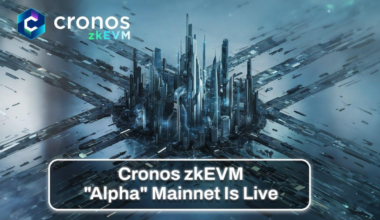Arbitrum is a layer 2 solution for Ethereum that aims to improve the scalability and speed of the network. It does this by using optimistic rollups, which allow transactions to be processed off-chain and then later verified on-chain.
This results in significantly lower fees and faster transaction times than using the Ethereum mainnet directly.
Arbitrum is still in development, but it has already attracted a lot of attention from the DeFi community. Several major DeFi protocols, such as SushiSwap and Uniswap, have already integrated with Arbitrum, and more are expected to follow in the future.
If Arbitrum is successful, it could help to solve some of the biggest challenges facing Ethereum today. It could make the network more scalable and affordable, which would make it more accessible to a wider range of users. This could lead to a boom in DeFi adoption and the growth of the Ethereum ecosystem as a whole.
How Arbitrum Works
Arbitrum uses optimistic rollups to achieve its scalability and speed improvements. Optimistic rollups work by batching together transactions and then submitting them to an Ethereum Virtual Machine (EVM) running on a sidechain.
The sidechain is secured by a set of validators who are responsible for verifying the transactions and ensuring that they are valid.
If a transaction is found to be invalid, the validator who submitted it is penalized. This provides an incentive for validators to act honestly and to verify transactions correctly.
Once the transactions have been verified, they are then submitted to the Ethereum mainnet. This is done in a single transaction, which is much cheaper and faster than submitting each transaction individually.
Benefits of Arbitrum
There are several benefits to using Arbitrum. First, it offers significantly lower fees than using the Ethereum mainnet directly. This is because the transactions are processed off-chain, which reduces the amount of computation that needs to be done on the Ethereum mainnet.
Second, Arbitrum offers faster transaction times. This is because the transactions are batched together and submitted to the Ethereum mainnet in a single transaction.
Third, Arbitrum is more secure than other layer 2 solutions. This is because the transactions are verified on an EVM running on a sidechain, which is secured by a set of validators.
Drawbacks of Arbitrum
There are also some drawbacks to using Arbitrum. First, it is still in development, which means that it is not yet fully battle-tested.
Second, Arbitrum is not yet as widely adopted as other layer 2 solutions, which means that there are fewer DeFi protocols available on the network.
Overall, Arbitrum is a promising layer 2 solution for Ethereum. It offers significant improvements in scalability, speed, and security, and it is already attracting a lot of attention from the DeFi community. If Arbitrum is successful, it could help to solve some of the biggest challenges facing Ethereum today.



